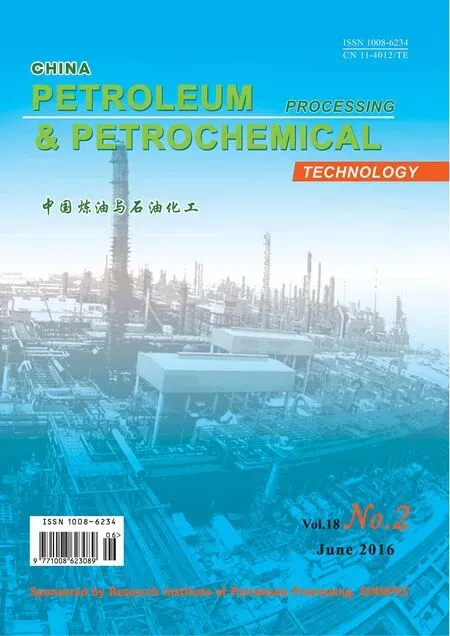Electrospinning Preparation and Mechanical Properties of Polymethyl Methacrylate (PMMA)/Halloysite Nanotubes (HNTs) Composite Nano fi bers
Cheng Zhilin; Qin Xixi; Qin Dunzhong
(1.College of Chemistry and Chemical Engineering, Yangzhou University, Yangzhou 225002; 2. Jiangsu Sinvochem Company, Yangzhou 211900)
Electrospinning Preparation and Mechanical Properties of Polymethyl Methacrylate (PMMA)/Halloysite Nanotubes (HNTs) Composite Nano fi bers
Cheng Zhilin1; Qin Xixi1; Qin Dunzhong2
(1.College of Chemistry and Chemical Engineering, Yangzhou University, Yangzhou 225002; 2. Jiangsu Sinvochem Company, Yangzhou 211900)
The paper was aimed at the PMMA/HNTs composite nano fi bers with well enhanced mechanical properties prepared by electrospinning technique for the first time. A series of characterizations were used to illustrate the structure and properties of the composite nanofibers by SEM, XRD, FTIR and DSC techniques. The effect of the PMMA/HNTs composite nanofibers in relationship to the mass percentage of HNTs was investigated. The results indicated that HNTs wrapped in polymer matrix were highly oriented and dispersed by the electrospinning technique, resulting in improved thermal stability of the polymer. Moreover, the mechanical properties of the PMMA/HNTs composite nano fi bers which were dependent on HNTs mass content were measured, and good enhanced mechanical properties were obtained.
PMMA; HNTs, composite nano fi bers, electrospinning
1 Introduction
Nanofibers can be produced from a wide range of polymers. These fibers have extremely high specific surface area due to their small diameters, and nanofiber mats can be highly porous with excellent pore interconnection. These unique characteristics plus the functionalities from the polymers themselves provide nanofibers with many desirable properties for advanced applications. Electrospinning is a very versatile and cost effective process for producing multi-functional nanofibers from various polymers, polymer blends and composites[1-3]. In the recent past, the composite or functioned PMMA nano fi bers prepared by electrospinning technique have presented many promising applications, such as lithium ion battery[1], luminescent fiber[2]and bioseparation[3].
More recently, Reddy, et al.[4]reported that the dielectric constant of WS2/PMMA composite nano fi bers manufactured by electrospinning were obviously higher than that of the Perspex, and their enhanced rigidity and toughness could be used as transparent high energy absorption material. Ji, et al.[5]reported the gas sensing properties of the PANI/PMMA coaxial composite nanofibers with polyaniline (PANI) formed by virtue of in-situ solution polymerization by electrospinning. Preda, et al.[6]reported that the semiconductor coated fiber based on ZnO/PMMA composite nanofibers could be prepared by combination of chemical deposition and electrospinning. Bae, et al.[7]reported that the PMMA fi bers with good adsorption property could be used on the sewage disposal and environmental protection.
As a two-layered alumino-silicate clay, halloysite nanotubes (HNTs) have a number of exciting potential applications in polymer nanocomposites thanks to their high mechanical strength, thermal stability, biocompatibility, and abundance of resources[8-12].
In this paper, the PMMA/HNTs composite nanofibers were successfully prepared by electrospinning technique. The composite nanofibers were characterized by SEM, XRD, IR, and DSC techniques, with their mechanical properties measured.
2 Experimental
2.1 Materials
HNTs (with the length covering 200—500 nm and the pore diameter ranging from 15 nm to 25 nm) were purchased from the Golden Sun Ceramics Co., Ltd. of China. Before being used, HNTs were calcined at 500 ℃ for 6 h. All reagents were of analytically pure grade and used without further puri fi cation.
2.2 Preparation of dispersed PMMA/HNTs solution
Firstly, HNTs were highly dispersed in DMF solvent by the sand milling device, which could obtain a uniform suspension that could be stabilized for 3 days without any sediment. Next, 28% of PMMA transparent solution was prepared by dissolving PMMA in DMF solvent at room temperature for 2 h under vigorous stirring by a mechanical stirrer. Finally, a certain amount of the previously obtained HNTs suspension was added into the above PMMA solution under vigorous stirring for 4 h at different mass concentration of HNTs , namely 5%, 10%, 15%, 20% and 25%, respectively, relative to PMMA, which was labeled as PMMA/HNTs-5, PMMA/HNTs-10, PMMA/HNTs-15, PMMA/HNTs-20 and PMMA/HNTs-25, respectively.
2.3 Electrospinning
The PMMA/HNTs composite nanofibers were prepared by using an SS-2535H electrospinning system(made by the Beijing Yongkang Industry Technology Development Co. Ltd.). A syringe was filled with the PMMA/HNTs solution. The solution was transferred through a syringe needle at a flow rate of 0.2 mm/min. The electrospun fi bers were collected on a paper wrapped rotating metal drum. The inner diameter of the syringe needle was 0.2 mm, and the distance between the syringe needle and the rotating metal drum was maintained at 15—20 cm apart. The electrospinning method for preparation of the PMMA/HNTs composite nanofibers is illustrated in Scheme 1.
2.4 Characterization
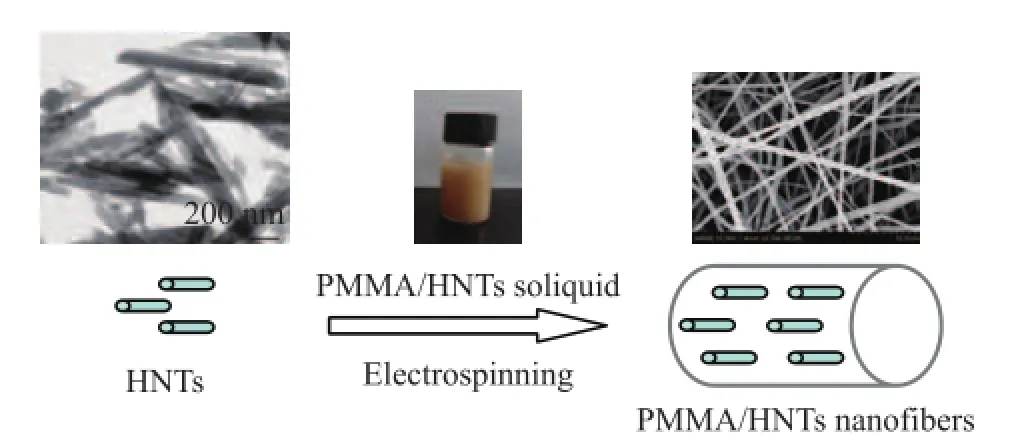
Scheme 1 Schematic illustration of preparation of PMMA/HNTs composite nano fi bers
The SEM images were recorded by a S-4800 field emission scanning electron microscope. The FT-IR spectra were recorded on a Cary 610/670 micro infrared spectrometer in the range of 4 000—750 cm-1by the single reflection ATR attachment. The XRD analysis was recorded by a powder X- ray diffractometer. The DSC analysis of polymer was recorded by a DSC 8500 differential scanning calorimeter. The mechanical properties were characterized by a TY8000-85KN electronic universal testing machine.
3 Results and Discussion
3.1 Characterization of PMMA/HNTs composite nano fi bers
Figure 1 shows the recorded SEM photos of the PMMA/ HNTs composite nanofibers containing different concentrations of HNTs. The diameter of composite nanofibers is about 800 nm and varies slightly with an increasing mass percentage of HNTs. When the mass percentage of HNTs reaches 25%, the surface morphology of the nanofibers still keeps smooth, with few notches and beads. Figure 2 and Table 1 give the elemental composition of PMMA and the PMMA/HNTs composite nano fi bers obtained by EDX analysis. It can be concluded that HNTs have been successfully electrospun in the PMMA polymer matrix.
Figure 3 shows the FT-IR spectra of the PMMA/HNTs composite nanofibers with different mass percentage of HNTs. As for PMMA, the wavenumber at 2 900 cm-1is assigned to the stretching vibration absorption of —CH2radicals, and those at 1 438 cm-1and 1 480 cm-1are ascribed to the stretching vibration of C—H(CH2) radicals. Furthermore, the wavenumber at 1 388 cm-1and 1 733 cm-1is ascribed to the stretching vibration of CH3and O=C radicals, respectively. But as regards HNTs, the feature peaks at 1 105 cm-1and 1 033 cm-1are assigned to the stretching vibration of Si—O radicals. It can be seen that thespectra of PMMA/HNTs composite nanofibers are similar, and furthermore there is no difference as compared to that of PMMA. It suggests that HNTs in PMMA polymer matrix are relatively homogeneous and highly scattered.
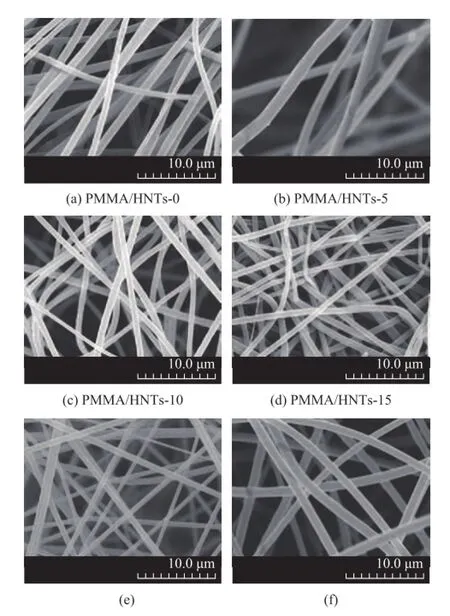
Figure 1 SEM photos of PMMA/HNTs composite nano fi bers with different mass percentages of HNTs
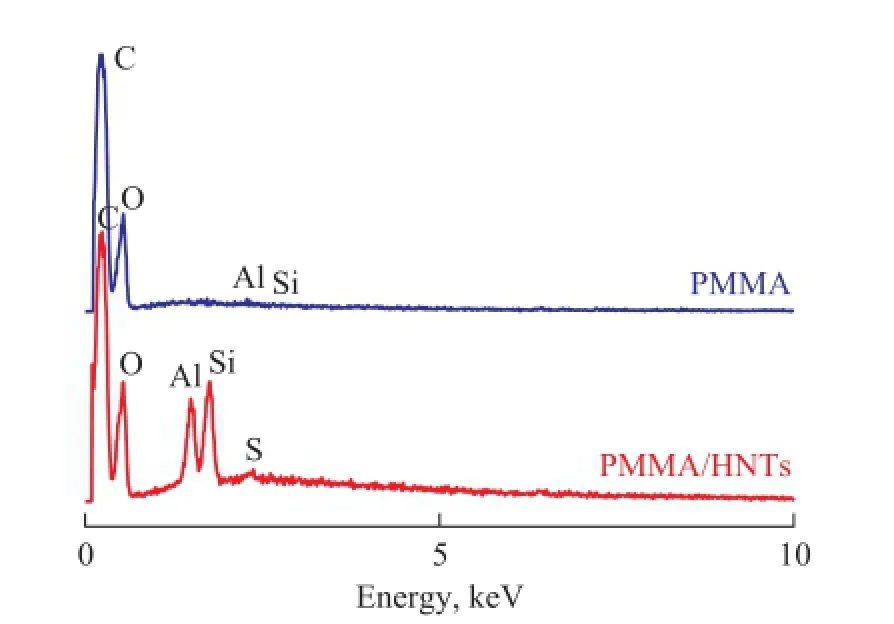
Figure 2 EDX analysis of PMMA nano fi bers and PMMA/ HNTs composite nano fi bers

Table 1 Elemental composition of PMMA and PMMA/ HNTs composite nanofibers identified by EDX analysis
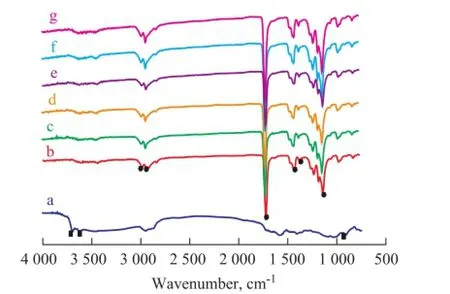
Figure 3 FT-IR spectrum of PMMA/HNTs in different percentages of HNTs
Figure 4 presents the XRD patterns of HNTs, PMMA and PMMA/HNTs composite nanofibers. The typical feature peaks of HNTs are identified at about 2θ=12° and 20°, whereas the characteristic peaks of PMMA are identified at about 2θ=16° and 31°. Obviously, when the mass percentage of HNTs is 5%, the XRD pattern of the PMMA/HNTs composite nanofibers is consistent with that of PMMA. However, as the mass percentage of HNTs further increases to 10%, the characteristic peak of PMMA at 2θ=16° signi fi cantly shifts forwards at 2θ=14° of the PMMA/HNTs composite nanofibers, and furthermore the peak becomes sharper and stronger. Thecharacteristic peak at 2θ=31° also undergoes a slight shift. Afterwards, the characteristic peaks of the PMMA/HNTs composite nano fi bers vary insigni fi cantly when the mass percentage of HNTs further increases from 15% to 20% and 25%. This indicates that the crystalline structure of PMMA was affected by the content of HNTs in composites during the electrospinning process. It suggests that HNTs were highly dispersed in the PMMA polymer matrix.
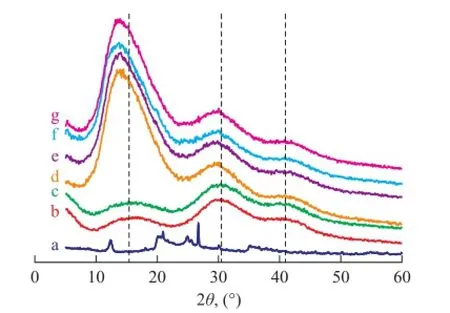
Figure 4 XRD spectra of PMMA/HNTs composite nano fi bers
The DSC analysis results of PMMA and PMMA/HNTs composite nano fi bers are presented in Figure 5 and listed in Table 2. As the HNTs content increased from 5% to 25% in the composites, the glass transition temperature (Tg) of the PMMA/HNTs composite nano fi bers increased by 5.17 ℃from 101.30 ℃ of PMMA to 106.47 ℃ of PMMA/HNTs-25. This implies that the thermal stability of the PMMA/HNTs composite nanofibers is improved with an increasing HNTs content in the composites.
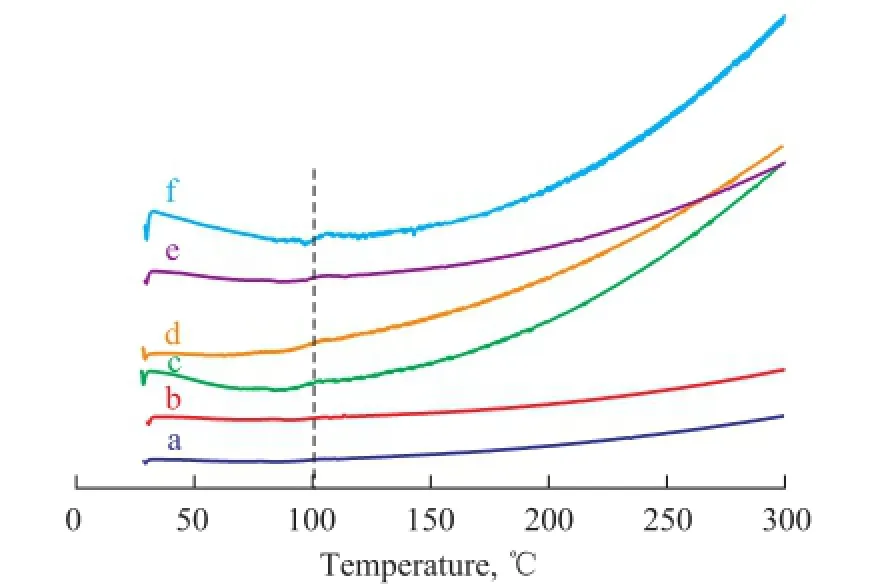
Figure 5 DSC analysis of PMMA/HNTs composite fi bers
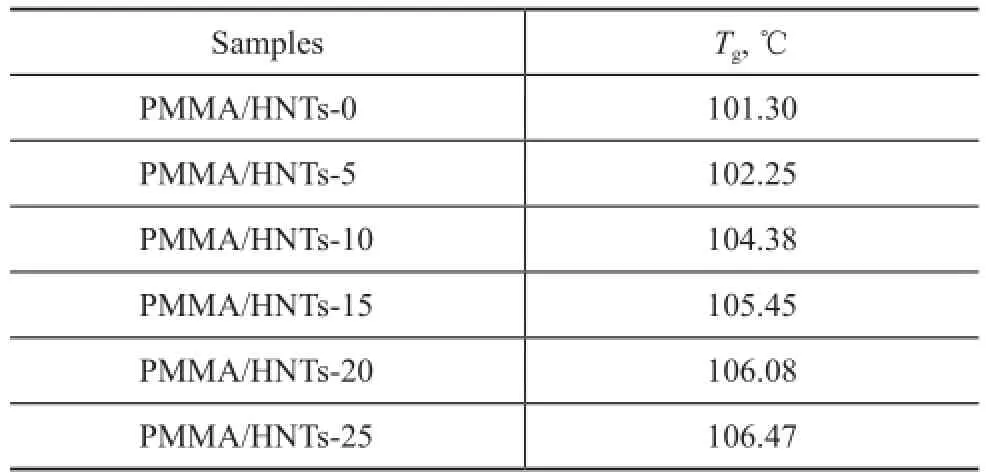
Table 2 Relationship between the Tg values of PMMA/ HNTs composite nanofibers and the HNTs content
3.2 Mechanical properties of PMMA/HNTs composite nano fi bers
Table 3 lists the relationship between the mechanical properties of the PMMA/HNTs composite nano fi bers and the mass percentage of HNTs. It is well known that the inorganic micro-fibers functioning as fillers such as the glass fi ber can enhance the strength and toughness of the polymer. More interestingly, the enhancing effect of many types of nanofibers is significantly higher than those of microfibers thanks to the microstructure interaction of polymer and nano fi bers, such as CNT[13-14]. So far, HNTs serving as a type of nanofibers still have exhibited an excellent enhanced ability in polymer[15-16]. Compared to PMMA, the tensile modulus of the PMMA/HNTs composite fi brofelt containing 15% of HNTs is increased to 18.750 MPa, while the tensile strength is enhanced to 3.581 MPa, being by 81.67% and 4.09% higher than those of PMMA, respectively. This outcome should be attributed to the fact that the highly dispersed and oriented HNTs fi llers were wrapped inside the polymer nano fi bers by means of electrospinning, which could improve the anisotropy of the polymer crystal structure. More regretfully, the elongation at break of the PMMA/HNTs composites nanofibers containing 15% of HNTs slumps obviously by about 28% as compared to that of PMMA, indicating that the toughness of the composite nano fi bers is reduced. As the mass percentage of HNTs further increases to more than 15%, the tensile modulus and the tensile strength continue to fall off. This phenomenon should be attributed to the fact that the agglomeration of HNTs nanotubes takes place, which would subsequently decrease their degree of anisotropy. Moreover, the agglomeration of the nanotubes increases the weak van der Walls interaction between the nanotube bundles and the walls of the wrapped nanofibers. However, these interactions are negligible at a lower mass percentage of nanotubes out of the directional anisotropy[17].
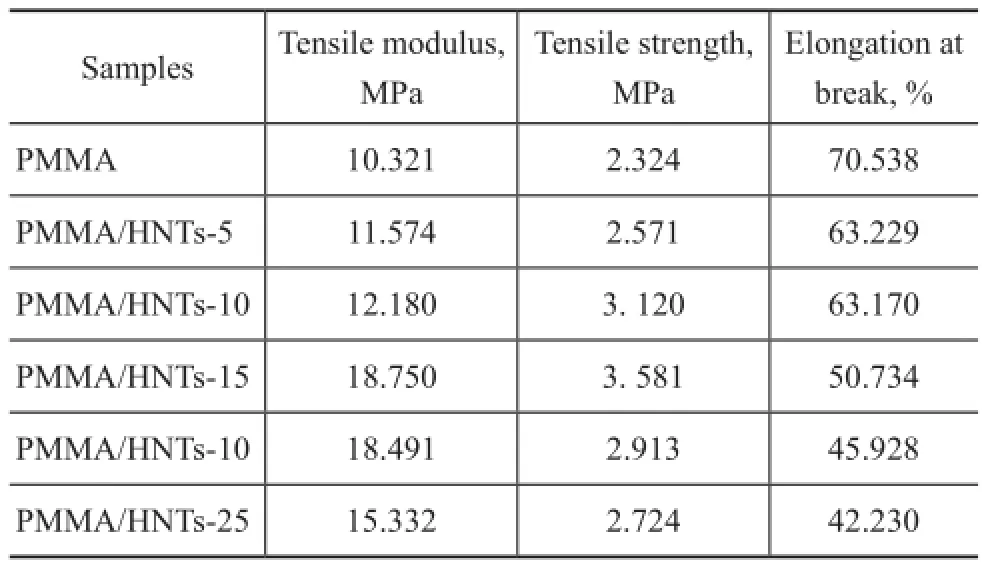
Table 3 Mechanical properties of PMMA/HNTs fibrofelt
4 Conclusions
The PMMA/HNTs composite nanofibers with good mechanical properties were prepared by electrospinning technique. The glass transition temperature (Tg) of the PMMA/HNTs composite nanofibers was improved by about 5.17 ℃, exhibiting a promising thermal stability. Meanwhile, the tensile modulus and tensile strength of the PMMA/HNTs composite nano fi bers containing 15% of HNTs were enhanced by about 81.67% and 4.09%, respectively, as compared to those of PMMA.
Acknowledgment: This work was supported by the Talent Introduction Fund of Yangzhou University (2012), the Key Research Project—Industry Foresight and General Key Technology of Yangzhou (YZ2015020), the Innovative Talent for the Green Yangzhou Golden Phoenix Program (yzlyjfjh2015CX073), the Jiangsu Province Science and Technology Support Project (BE2014613), and the Six Talent Peaks of Jiangsu Province (2014-XCL-013). The authors also acknowledge the Project funded by the Priority Academic Program Development of Jiangsu Higher Education Institutions. The data of this paper were originated from the Test Center of the Yangzhou University.
[1] Zheng Zhong, Cao Qi, Wang Xianyou. PVC-PMMA composite electrospun membranes as polymer electrolytes for polymer lithium-ion batteries[J]. Ionics, 2012, 18(1/2): 47-53
[2] Chen H C, Liu C L, Bai C C, et al. Morphology and photophysical properties of DB-PPV/PMMA luminescent electrospun fi bers[J]. Macromol Chem Phys, 2009, 210(11): 918-925
[3] Song Fei, Wang Xiuli, Wang Yuzhong. Fabrication of novel thermo-responsive electrospun nanofibrous mats and their application in bioseparation[J]. Eur Polym J, 2011, 47(10): 1885-1892
[4] Reddy C S, Zak A, Zussman E. WS2nanotubes embedded in PMMA nanofibers as energy absorptive material[J]. J Mater Chem, 2011, 21(40): 16086-16093
[5] Ji Shanzuo, Li Yang, Yang Mujie, Gas sensing properties of a composite composed of electrospun poly(methyl methacrylate) nanofibers and in situ polymerized polyaniline[J]. Sensors and Actuators B: Chemical, 2008, 133(2): 644-649
[6] Preda N, Evanghelidis A, Enculescu M. Zinc oxide electroless deposition on electrospun PMMA fi ber mats[J]. Mater Lett, 2015, 138(1): 238-242
[7] Bae H S, Haider A, Selim K M K. Fabrication of highly porous PMMA electrospun fibers and their application in the removal of phenol and iodine[J]. J Polym Res, 2013, 20(7): 2427-2432
[8] Liu Mingxian, Guo Baochun, Du Mingliang, et al. Halloysite nanotubes as a novel β-nucleating agent for isotactic polypropylene[J]. Polymer, 2009, 50(13): 3022-3030
[9] Rooj S, Das A, Thakur V, et al. Preparation and properties of natural nanocomposites based on natural rubber and naturally occurring halloysite nanotubes[J]. Mater Des, 2010, 31(4): 2151-2156
[10] Lvov Y, Abdullayev E. Functional polymer–clay nanotube composites with sustained release of chemical agents[J]. Prog Poly Sci, 2013, 38(10): 1690-1719
[11] Pasbakhsh P, Ismail H, Fauzi M N A. EPDM/modified halloysite nanocomposites[J]. Appl Clay Sci, 2010, 48(3): 405-413
[12] Li Huihua, Luo Binghong, Qin Xiaopeng, et al. Preparation of PLLA/g-HNTs composite nanofiber membranes by electrospinning and studies on their properties[J]. Acta Polymerica Sinica, 2015 (1): 31-40 (in Chinese)
[13] Awasthi K, Yadav T P, Mishra P R, et al. Investigation on carbon nanomaterials: Coaxial CNT-cylinders and CNT-polymer composite[J]. Bull Mater Sci, 2008, 31(3): 313-318
[14] Cai J Y, Min J, Miao M, et al. Enhanced mechanical performance of CNT/Polymer composite yarns by gammairradiation[J]. Fiber Polym, 2014, 15(2): 322-325
[15] Liu Mingxian, Jia Zhixin, Jia Demin. Recent advance in research on halloysite nanotubes-polymer nanocomposite[J]. Prog Polym Sci, 2014, 39(8): 1498-1525
[16] Jia Zhixin, Luo Yuanfang, Guo Baochun, et al. Reinforcing and Flame-Retardant Effects of Halloysite Nanotubes on LLDPE[J]. Polym Plast Technol Eng, 2009, 48(6): 607-613
[17] Jeong J S, Moon J S, Jeon S Y, et al. Mechanical properties of electrospun PVA/MWNTs composite nanofibers[J]. Thin Solid Films, 2007, 515(12): 5136-5141
Received date: 2015-12-11; Accepted date: 2016-03-02.
Dr. Prof. Cheng Zhilin, E-mail: zlcheng224@126.com.
- 中國(guó)煉油與石油化工的其它文章
- Study on Preparation and Properties of Grease Based on Ultra fi ne Bentonite Powder
- Preparation and Tribological Properties of Lanthanumdoped Muscovite Composite Particles as Lubricant Additives in Lithium Grease
- Preparation and Tribological Behavior of Hydrophobic Lanthanum Borate Nanosheets in Rapeseed Oil
- Synthesis and Evaluation of Environmentally Friendly Calcium Isostearate Detergent with Excellent Oil Solubility
- Experimental and Molecular Simulations for Evaluating the Effect of Lubricity Improvers on the Property of Jet Fuel
- Analysis and Modeling of Wangqing Oil Shale Drying Characteristics in a Novel Fluidized Bed Dryer with Asynchronous Rotating Air Distributor

